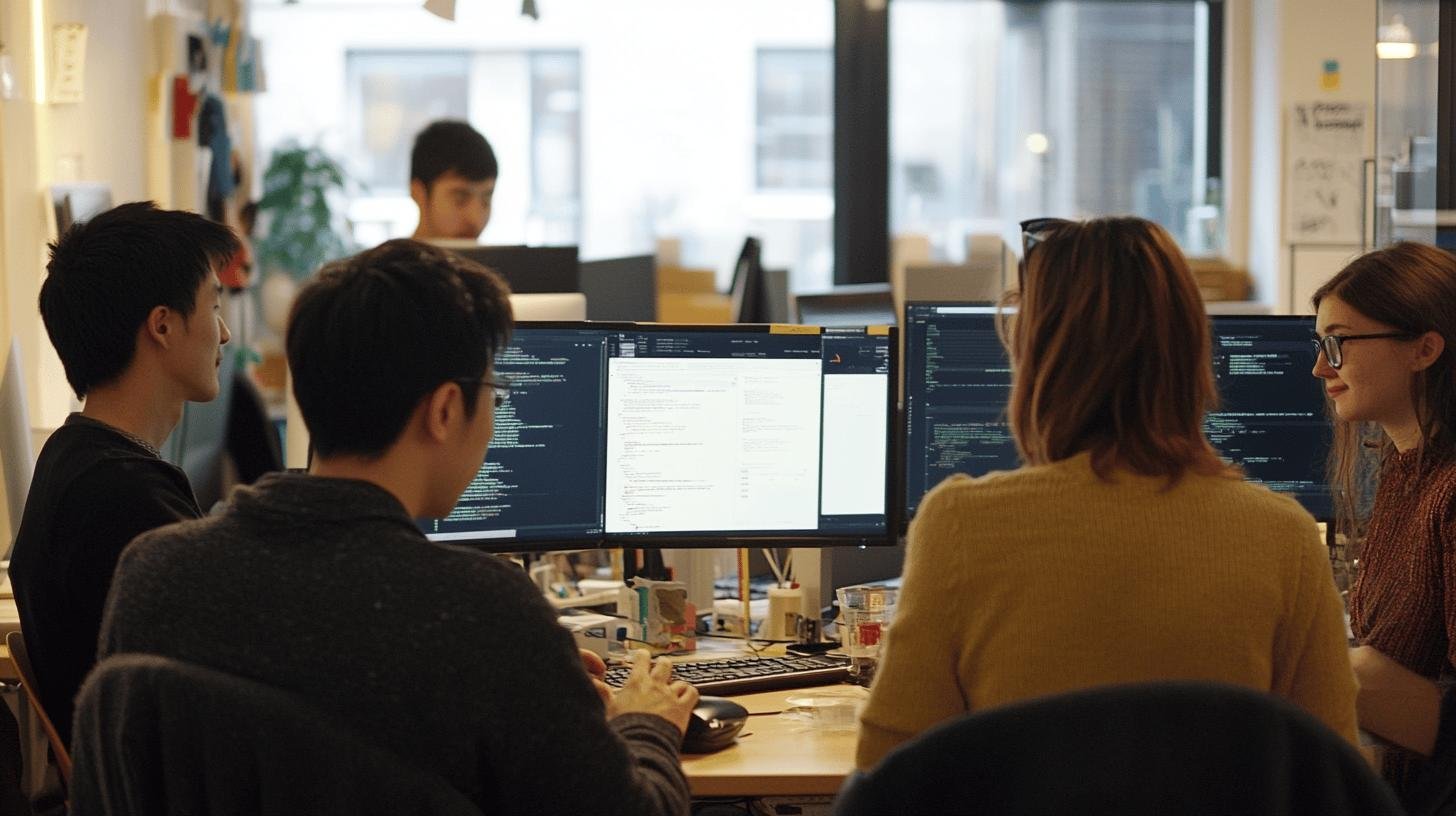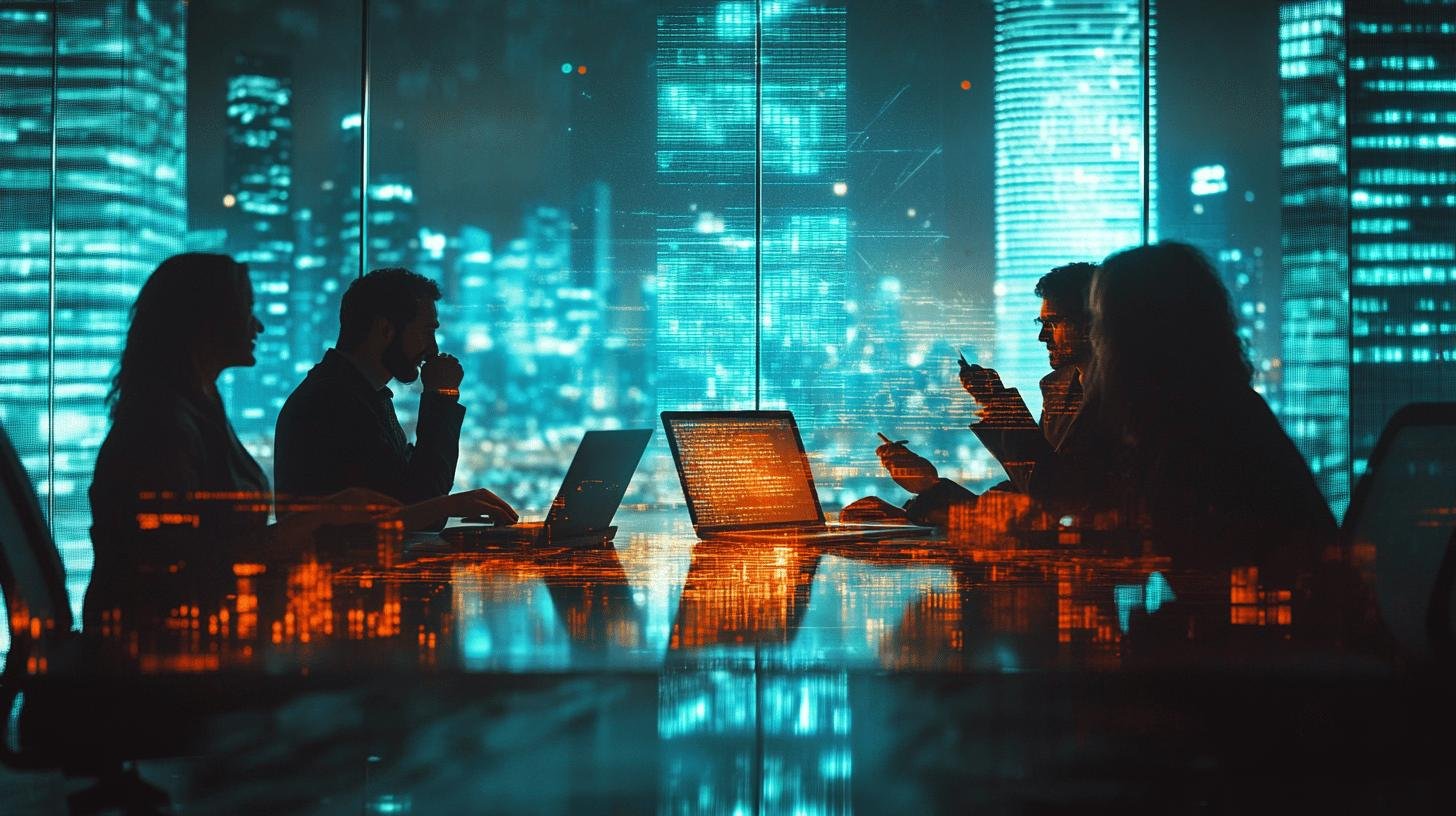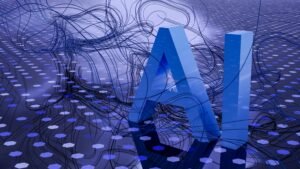Have you ever wondered if the key to innovation lies in fusing AI and human creativity? Imagine AI working with humans to reduce our to-do lists and provide a creative boost. AI notices subtleties that humans might overlook in the chaotic world of healthcare. In the meantime, it’s inspiring some really lovely works of art. This combination of AI effectiveness and human intuition is revolutionary. Stay tuned as we go knee deep into how human AI integration is transforming several industries and enhancing everything from finance to the arts!
Understanding Human AI Integration
Human AI integration is like teaming up with a super-smart robot buddy to achieve tasks faster and better. It combines our human intelligence with AI’s superior abilities to enhance our capabilities. Imagine having a helper that never tires and processes data at lightning speed. That’s AI for you! In healthcare, AI assists doctors in diagnosing illnesses and planning treatments. Meanwhile, in the arts, it helps create innovative art pieces, acting like a creative partner with endless ideas.
Let’s explore some industries where this partnership is making significant impacts.
- Healthcare: AI aids in diagnoses and treatment strategies.
- Finance: It accelerates document analysis and fraud detection.
- Art: AI tools inspire new artistic creations.
- Agriculture: Farmers use AI for data analysis to enhance crop management.
- Retail: AI optimizes inventory and improves customer experiences.
When we blend human intuition with AI’s efficiency, we get the best of both worlds. That gut feeling you trust when things seem right? That’s human intuition. Paired with AI’s quick data processing, we can make smarter decisions. This combination not only boosts efficiency but also opens new opportunities we couldn’t dream of before. So, what’s stopping us from merging creativity and efficiency?
Industry Applications of Human AI Integration

AI acts as a secret ingredient, transforming industries everywhere. From transforming healthcare to innovating the arts, AI is catalyzing change. It’s like wielding a magic wand for smarter, faster outcomes. Let’s see how AI is redefining major sectors.
In healthcare, AI is transformative. Doctors sift through vast amounts of information for patient diagnoses, and AI steps in to expedite this process. AI analyzes medical images and lab results swiftly, helping doctors identify issues faster. AI’s reliability in healthcare is akin to having an ever-vigilant assistant. This results in quicker diagnoses and improved treatment plans, benefiting everyone by delivering timely care.
Now, consider finance. How do banks manage numerous transactions daily? AI plays a critical role here. It aids in document analysis, ensuring everything is in order. As a fraud monitor, AI detects suspicious activities before they escalate. Thus, AI secures financial operations, allowing institutions to function smoothly and securely.
In the art world, AI is a creative ally. Artists use AI tools to craft innovative pieces, blurring boundaries of imagination. Ever encountered a painting reminiscent of robotic creativity? That’s AI’s influence! AI acts like a tireless muse, enabling artists to experiment with new styles and techniques. With AI, creative visions materialize effortlessly.
AI is a reliable sidekick across these industries, enhancing productivity and creativity like never before. Thanks to AI, we’re not only increasing speed but also exploring new ideas previously unimaginable. What’s next on AI’s agenda?
Ethical Considerations in Human-AI Integration
Human AI integration raises important ethical questions we can’t overlook. Ever wondered about AI’s drawbacks? Data privacy tops the list. AI systems often collect vast personal data, making security vital. Bias is another concern. AI might reflect the prejudices of its creators, leading to unfair results. Additionally, there’s the societal impact—like AI’s influence on jobs or social dynamics. How do we address these issues? By ensuring AI systems are trustworthy and fair. Transparency in operations and inclusivity in design are crucial for benefiting everyone, not just select groups.
- Ensure data privacy and security.
- Address and reduce algorithmic biases.
- Promote inclusivity and accessibility.
- Maintain transparency in AI operations.
Aligning AI with human-centric values is vital. Consider it like equipping AI with a moral compass. This involves developing AI respecting human rights and supporting societal well-being. When AI aligns with societal values, it enhances lives instead of complicating them. By prioritizing ethical considerations, we develop AI systems that are efficient, fair, and trustworthy. Let’s keep AI friendly and focused on bettering our world!
The Future of Human-AI Collaboration

AI is set to become our ultimate collaborator, and it’s accelerating every day. Over the next 5 to 10 years, AI will support human skills like never before. Picture AI suggesting treatments to doctors or crafting digital masterpieces with artists. The magic emerges when AI’s technical strengths meet our creativity and emotional intelligence. This synergy will drive advancements across fields, making life more efficient and innovative. So, what lies ahead for this duo? Prepare for AI to be a crucial part of our daily toolkit, empowering us to think grander and work smarter.
- AI-enhanced personalized learning
- Smarter AI-driven creative tools for artists
- Predictive AI in healthcare
- Seamless AI integration in remote work
- Advanced AI tools for emotional intelligence in customer service
As we step into this future, businesses and society must adapt. It’s about balancing AI’s strengths with our unique skills. Companies should cultivate environments where AI complements human creativity and decision-making, not replaces them. This means training people to work alongside AI, fostering adaptability, and encouraging continuous learning. By focusing on these aspects, we ensure AI enriches work and life meaningfully. Ready to embrace this future? Let’s make AI our partner in progress!
Case Studies of Successful Human-AI Integration
When humans and AI collaborate, it’s like watching a superhero duo in action! These partnerships have sparked innovations across many domains. Take healthcare, for example. AI systems help doctors diagnose conditions more quickly and accurately, leading to better patient outcomes. In journalism, AI tools improve content creation, allowing writers to focus on storytelling while AI manages the details. By merging human creativity with AI’s precision, we’re achieving breakthroughs once considered dreams. So, how does this dynamic team work its magic? Let’s explore some real-life examples!
- Healthcare: AI systems at UCSF support radiologists in analyzing mammograms, reducing errors, and improving patient care.
- Journalism: Tools like Grammarly enhance writing clarity and catch mistakes, enabling journalists to produce polished content effortlessly.
- Legal Industry: Platforms like Luminance assist lawyers by swiftly analyzing documents, reducing research time, and boosting efficiency.
These case studies demonstrate how human AI integration enhances creativity and efficiency. By leveraging AI, professionals in various fields can focus on what they excel at—whether it’s caring for patients, crafting captivating stories, or navigating legal intricacies. The benefits are clear: faster processes, more accurate outcomes, and fresh opportunities for innovation. With AI as our steadfast ally, there’s no limit to our achievements!
Conclusion
Exploring human AI integration opened a world where tech and talent unite. We saw how AI boosts skills in healthcare, finance, and art, fostering creativity and efficiency. Ethical concerns remind us to handle this synergy carefully, ensuring privacy and inclusivity.
The future looks bright, with AI’s potential enhancing our work lives. Businesses are gearing up to blend AI with human skills for top-notch results. Celebrating case studies shows us the power of these partnerships.
FAQ
What is human AI integration?
Human AI integration means combining human intelligence and AI to boost abilities and productivity. This is seen in healthcare with AI assisting in diagnosis and in the arts with AI-driven creativity.
How can humans and AI work together?
Humans and AI can team up by letting AI handle repetitive tasks while people focus on creativity and problem-solving. This mix enhances productivity and creativity across different fields.
What is the integration of AI?
AI integration involves blending AI technology into existing systems or processes. It improves efficiency and problem-solving in areas like healthcare diagnostics and financial fraud detection.
What is it called when humans merge with AI?
When humans merge with AI, it’s often called human-AI collaboration or interaction. This collaboration utilizes the strengths of both humans and AI for better outcomes.




